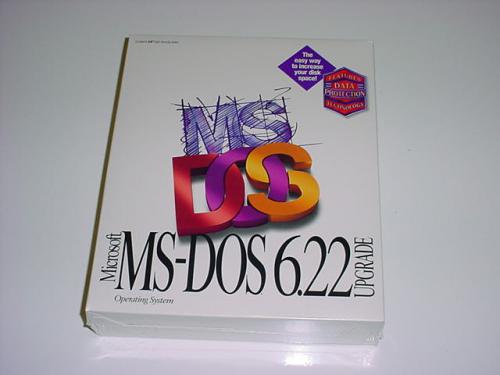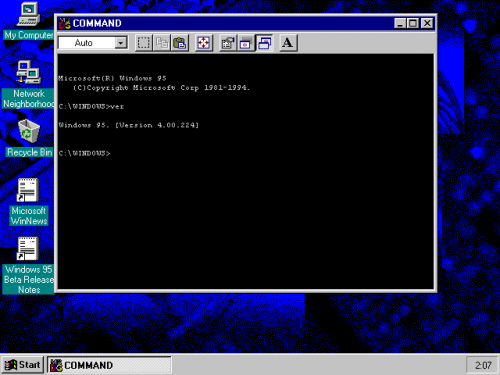

I'm going to start a discussion here, so that we can properly determine the purpose of the inclusion of MS-DOS in Windows 95. Since we are an OS history site, this topic would be quite useful here, especially when several people have expressed interest in this subject.
And please, no junk posts, one-line "opinions", etc... this topic is intended for serious research and discussion among true collectors.
Anyway, I have noticed that there is a great deal of debate on the purpose of MS-DOS in Windows 95, especially about its role, but even about its inclusion. Some people claim that it was intended to supersede the original MS-DOS product, while others claim that it was simply an elaborate cover-up for removing competing operating systems from the market.
Of course, I have opened this discussion for the sole purpose of proper research here. I will also see to it that we can gain enough information from the antitrust documents and other sources, with enough information from both sides of the debate.
I understand that some of you may conclude either side with facts such as the "WinBolt" program for running Windows 95 and Windows 98 on unsupported DOS operating systems. However, while I agree that those findings are obviously quite significant, you have to remember that there may be much more to it than just that, and the issue is often much more complicated.
--------------------------------
Personally, my own opinion is that there were clearly advantages and disadvantages to the marketing of MS-DOS as a separate product as well as the inclusion of MS-DOS in Windows 95. For one, Windows 3.1, Windows for Workgroups 3.1, and Windows for Workgroups 3.11 could be used on different versions of MS-DOS as well as different DOS operating systems (in this case, DR-DOS). However, this created a great deal of confusion, since it led people to believe that Windows was nothing more than a simple DOS program. Also, users were required to obtain separate copies of MS-DOS and Windows, and even to install each one separately, which was undoubtedly found to be rather inconvenient for many users.
On the other hand, Windows 95 included MS-DOS 7.0 within the same product, and while Windows 95 was not permitted to run on other versions of MS-DOS or other DOS operating systems, it still had the advantage of being able to install MS-DOS and Windows automatically, and also removed the requirement of manually placing "WIN" at the end of AUTOEXEC.BAT, both of which made it more convenient for most users. It also helped remove the idea that Windows was nothing more than a "DOS program".
